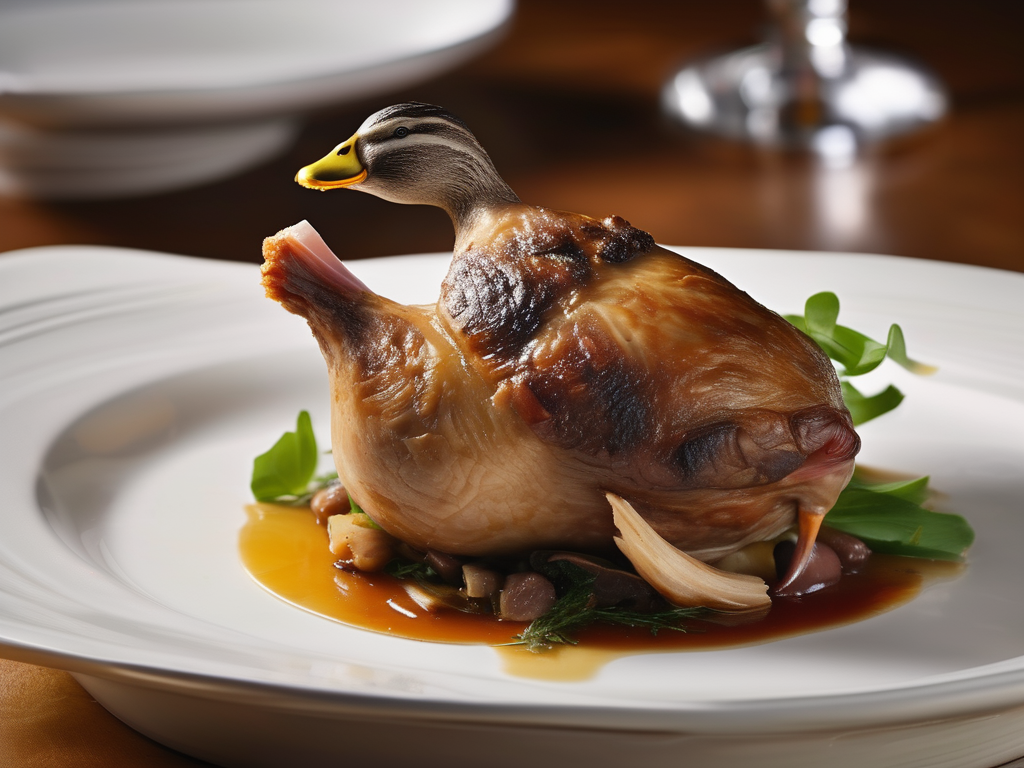
Proper Storage of Duck Confit for Maximum Freshness
Get Your Free Food Safety Cheat Sheet
30 most common foods with instant answers. Print it and stick it on your fridge—completely free!
Proper Storage of Duck Confit for Maximum Freshness
Duck confit is a classic French delicacy known for its rich flavors and tender texture. Proper storage of duck confit is essential to maintain its quality and freshness. In this blog post, we will discuss how to store duck confit correctly to ensure maximum freshness and flavor. (Duck confit)
Understanding Duck Confit
Before delving into storage tips, let's briefly touch upon what duck confit is. Duck confit is a traditional French dish made by slow-cooking duck legs in their rendered fat until they are tender and fall-off-the-bone. The result is a flavorful and succulent meat that can be enjoyed on its own or used in various dishes like salads, sandwiches, or pasta.
Importance of Proper Storage
Proper storage of duck confit is crucial to prevent spoilage and maintain its taste and texture. Storing duck confit incorrectly can lead to bacterial growth, loss of flavor, and potential foodborne illnesses. By following the right storage guidelines, you can extend the shelf life of your duck confit and enjoy it at its best.
Tips for Storing Duck Confit
Here are some practical tips for storing duck confit to ensure maximum freshness:
-
Refrigeration: After preparing or purchasing duck confit, it should be promptly refrigerated to keep it fresh. Place it in an airtight container or wrap it tightly in plastic wrap before refrigerating.
-
Temperature: Store duck confit in the refrigerator at a temperature below 40°F (4°C). The cold temperature helps slow down bacterial growth and preserves the quality of the meat.
-
Labeling: Properly label the container or package with the date of preparation or purchase. This will help you track the freshness of the duck confit and avoid consuming it past its recommended shelf life.
-
Freezing: If you don't plan to consume the duck confit within a few days, consider freezing it for long-term storage. Place the duck confit in a freezer-safe container or vacuum-sealed bag to prevent freezer burn.
-
Thawing: When ready to use frozen duck confit, thaw it in the refrigerator overnight. Avoid thawing at room temperature, as this can promote bacterial growth and compromise the quality of the meat.
Safety Precautions
While storing duck confit, it's essential to follow safety precautions to prevent foodborne illnesses:
-
Avoid Cross-Contamination: Keep raw duck confit away from ready-to-eat foods to prevent cross-contamination. Use separate cutting boards and utensils for raw and cooked meats.
-
Cooking Temperature: Ensure that duck confit is cooked to the recommended internal temperature of 165°F (74°C) to kill any harmful bacteria.
-
Reheating: When reheating duck confit, make sure it reaches a safe internal temperature to eliminate any bacteria that may have grown during storage.
Conclusion
Proper storage of duck confit is key to maintaining its freshness and flavor. By following the tips outlined in this blog post, you can enjoy delicious duck confit safely and confidently. Remember to refrigerate or freeze duck confit promptly, label it correctly, and follow safety guidelines to prevent foodborne illnesses. With the right storage practices, you can savor the exquisite taste of duck confit for an extended period. [Learn more about duck confit here](/food/duck confit). (Duck confit)
Related Posts
Here are some other articles you might find helpful:
Authoritative Food Safety References
These agencies and university labs inform every tip and health precaution we publish.
USDA FoodKeeper – Cold Storage Guidelines
Official refrigerator, freezer, and pantry timelines maintained by the U.S. Department of Agriculture.
Visit USDA FoodKeeperFDA Produce Safety Rule & Grower Guidance
Field-to-fridge handling practices that prevent contamination of fruits, vegetables, and leafy greens.
Visit FDA Produce SafetyCDC Foodborne Illness Prevention Hub
Surveillance-backed guidance on pathogens, symptoms, and steps to reduce foodborne illness risk.
Visit CDC Food SafetyUC Davis Postharvest Technology Center
University research detailing optimal storage atmospheres for produce after harvest.
Visit UC Davis PostharvestPenn State Extension – Home Food Preservation & Safety
Peer-reviewed extension bulletins on safe canning, chilling, and reheating practices.
Visit Penn State ExtensionGet Your Free Food Safety Cheat Sheet
30 most common foods with instant answers. Print it and stick it on your fridge—completely free! Want more? Upgrade to the complete guide with 70+ foods.
Scan your food directly and get instant safety info using our AI-powered camera feature.